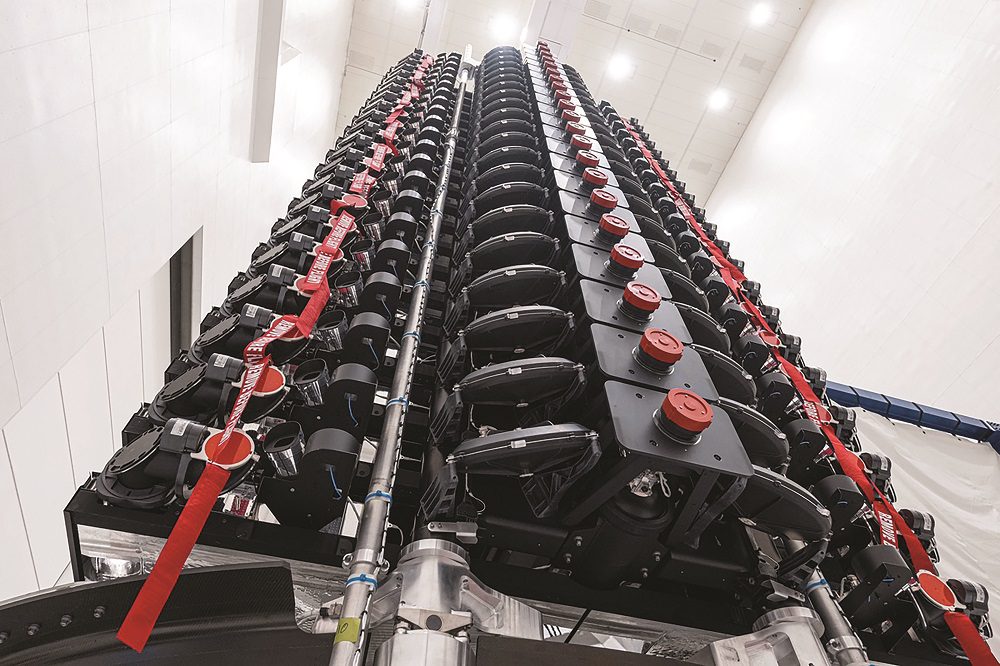SpaceX has obtained provisional consent to utilize extremely high-frequency E-band radio waves to enhance the capability of its low Earth orbit Starlink internet network.
The Federal Communications Commission (FCC) announced on March 8th that it is permitting SpaceX to employ E-band frequencies for communication between second-generation Starlink satellites and ground gateways, in addition to already approved spectrum in the Ka and Ku bands.
Specifically, SpaceX is now authorized to transmit between 71 and 76 gigahertz from space to Earth, and 81-86 GHz from Earth to space, using up to 7,500 Gen2 satellites.
SpaceX plans to launch 30,000 Gen2 satellites, alongside the already authorized 4,400 Gen1 satellites.
However, the FCC postponed a decision in December 2022 on whether to permit SpaceX to deploy the remaining three-quarters of its Gen2 constellation, which consists of spacecraft closer to Earth to improve internet speeds.
The regulator also delayed a decision at that time regarding SpaceX's plans to use E-band frequencies, stating the need to establish guidelines for their use in space first.
In a In a regulatory filing on March 8th, the FCC stated that it found SpaceX's proposed E-band operations do not create any new or increased frequency conflicts with other satellite operations.However, the approval comes with several conditions, including the possibility of requiring SpaceX to adjust operations if another satellite operator also seeks to utilize the radio waves.
Starlink satellites utilize Ku-band for connecting user terminals. In October, the FCC also allowed SpaceX to
provide fixed-satellite services from Gen2 spacecraft using V-band spectrum, which is also extremely high frequency (EHF) and in its commercial infancy. Higher frequency spectrum bands offer greater bandwidth and throughput but are increasingly susceptible to weather interference and other issues.
Last year, SpaceX indicated that using E-band radio waves for backhaul would enable Starlink Gen2 to offer about four times more capacity per satellite than previous versions. They did not provide further details regarding this. Currently, there are approximately 1900 Starlink satellites launched under the Gen2 license in orbit,
according to spacecraft tracker and astrophysicist Jonathan McDowell
— about two-thirds of these satellites are significantly larger and more powerful than Gen1 but smaller than full-scale versions set to launch on SpaceX's Starship vehicle. Around 3,600 separate satellites in orbit are classified as Gen1. The FCC has put off a decision on whether to permit SpaceX to deploy the remaining 22,500 satellites in its proposed Gen2 constellation. SpaceX has obtained provisional approval to utilize extremely high-frequency E-band radio waves in order to enhance the capacity of its low Earth orbit Starlink broadband network.
The FCC continues to defer action over whether to allow SpaceX to deploy the other 22,500 satellites in its proposed Gen2 constellation.









